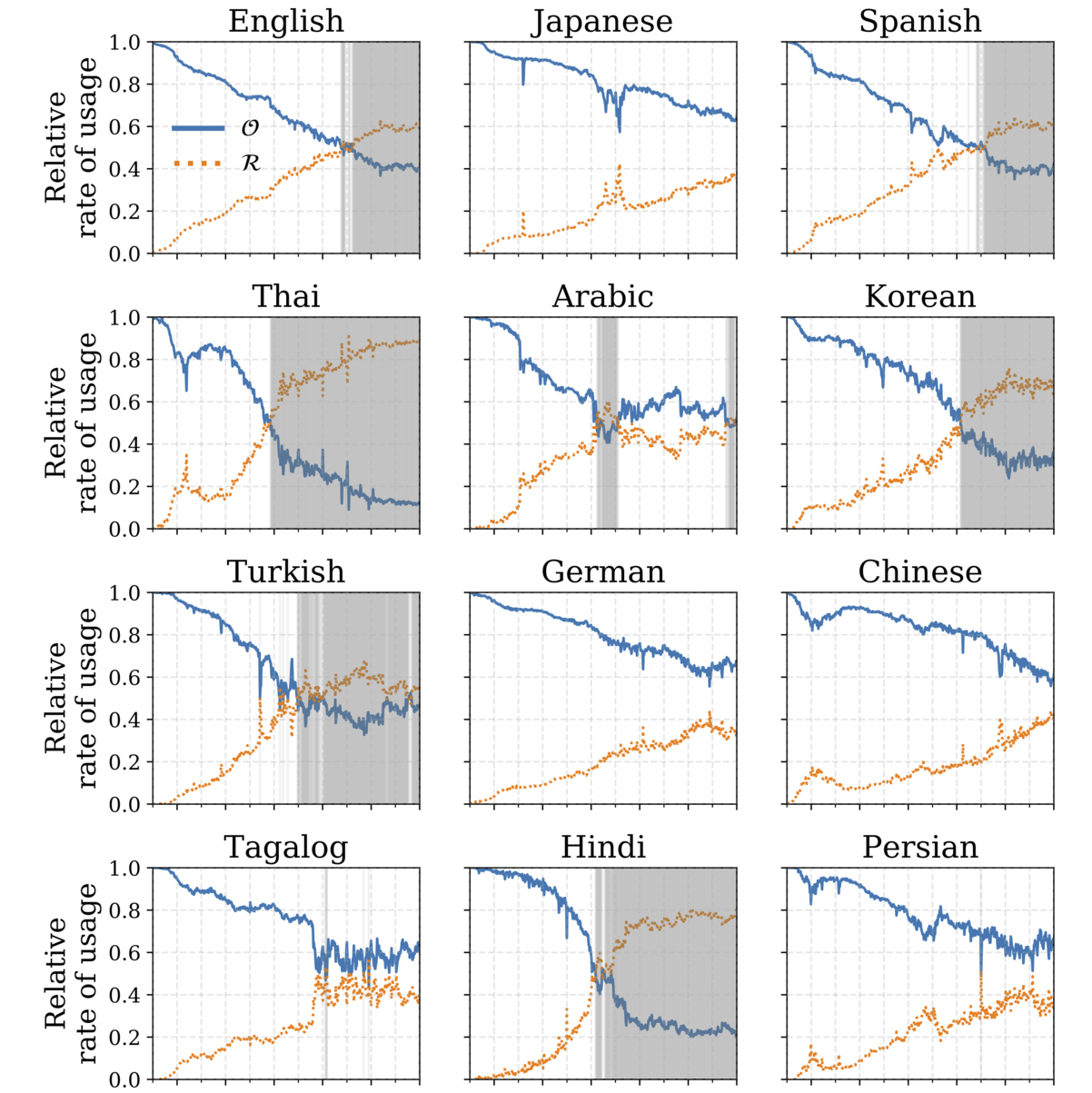The growing amplification of social media: Measuring temporal and social contagion dynamics for over 150 languages on Twitter for 2009–2020
T. Alshaabi, D. R. Dewhurst, J. R. Minot, M. V. Arnold, J. L. Adams, A. J. Reagan, C. M. Danforth, and P. S. Dodds
EPJ Data Science, 10, 15, 2021

Times cited: 98
Abstract:
Working from a dataset of 118 billion messages running from the start of 2009 to the end of 2019, we identify and explore the relative daily use of over 150 languages on Twitter. We find that eight languages comprise 80\% of all tweets, with English, Japanese, Spanish, and Portuguese being the most dominant. To quantify each language's level of being a Twitter 'echo chamber' over time, we compute the 'contagion ratio': the balance of retweets to organic messages. We find that for the most common languages on Twitter there is a growing tendency, though not universal, to retweet rather than share new content. By the end of 2019, the contagion ratios for half of the top 30 languages, including English and Spanish, had reached above 1—the naive contagion threshold. In 2019, the top 5 languages with the highest average daily ratios were, in order, Thai (7.3), Hindi, Tamil, Urdu, and Catalan, while the bottom 5 were Russian, Swedish, Esperanto, Cebuano, and Finnish (0.26). Further, we show that over time, the contagion ratios for most common languages are growing more strongly than those of rare languages.
- This is the default HTML.
- You can replace it with your own.
- Include your own code without the HTML, Head, or Body tags.
BibTeX:
@article{alshaabi2021b,
author = {Alshaabi, Thayer and Dewhurst, David R. and Minot,
Joshua R. and Arnold, Michael V. and Adams, Jane
L. and Danforth, Christopher M. and Dodds, Peter
Sheridan},
title = {The growing amplification of social media:
{M}easuring temporal and social contagion dynamics
for over 150 languages on {T}witter for 2009–2020},
journal = {EPJ Data Science},
year = {2021},
key = {language,contagion,social media},
volume = {10},
pages = {15},
}